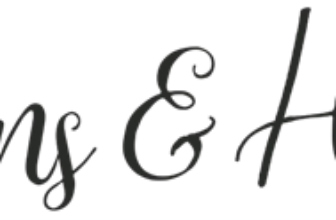
Bed Bug Management in Four Steps
[ad_1]
Bed bug management is labour intensive, time-consuming and it requires lots of knowledge and expertise to eliminate the pests. It is important that you visually and thoroughly inspect the site, correctly identify the pest and determine the source and extent of the infestation.
The integrated approach to bed bug management has four steps: visual inspection, prepare the room for treatment, treatment and follow-up procedures.
Visual inspection: Step 1 in Bed Bug Management
Inspection tools
a. A strong flashlight
b. Magnifying glass
c. Plastic zipper bag
d. Crevice tool
e. Compressed air
f. Screwdriver
g. Small tool kit
h. Alcohol, cotton swabs/baby wipes
i. Sticky traps
j. Gloves, soapy water, cloth and sponge
k. Mirror with handle
l. A notepad
m. A camera
n. Adjustable spanner
o. Hammer
What to look for
a. Blood stains
b. Dark faecal spots
c. Eggs, eggs shells, cast off skin
d. Bed bugs (adult and nymphs)
e. A pungent mouldy shoes or sickening sweet odour from an oily liquid discharged from the glands in the thorax
Where to look
a. Inspect the areas where you spend most of your resting (e.g. the bed, couch and chair).
b. Inspect the bedding, pillows and pillow cases.
c. Inspect along the seam and in tufts and folds of the mattress and underneath labels.
d. Inspect the box spring and bed frame.
e. Inspect the perimeter of the room including floor boards, walls, baseboards, windows, doors and carpet edges.
f. Inspect all furniture inside the room.
g. Inspect magazines, books, files and newspapers on shelves and on the floor.
h. Inspect all wall hangings (paintings, pictures frames, mirrors etc.)
i. Inspect cracks and crevices in furniture, in the box spring, bed frame and on the floor and in screw holes.
j. Inspect wall voids and outlets, electrical switch plates, wall sockets, ceiling light fixtures and ducts.
Prepare the room for treatment: Step 2 in Bed Bug Management
a. Remove bedding, pillow cases and pillows from the bed and store them in seal plastic bags for laundering and drying.
b. Store all other personal items in sealed plastic bin bags.
c. Dismantle headboard and bed frame to examine cracks and crevices.
d. Empty all drawers in closets, desks, tables, chest and cabinets inside the room and store contents in sealed plastic bin bags.
e. Use a screwdriver to remove electrical switch plates, outlet covers and wall sockets.
f. Remove all clutter from off the floor and underneath the bed.
Application of Treatment: Step 3 in Bed Bug Management
a. Vacuum the mattress, carpet, drawers, closets and all surfaces infested with bed bugs.
b. Read and follow instructions on labels before the application of insecticide.
c. Remove the vacuum bag, seal it in a plastic bag and discard it in the outside garbage bin.
d. Treat the mattress with appropriate treatments (e.g. steam treatment) and use mattress encasement.
e. Apply appropriate treatment to furniture, closets, dresser, wall hangings and all other infested items.
f. Apply residual dust chemical to cracks and crevices in furniture, the floor, windows, outlets and other harbourages.
Types of treatments
Desiccant dust, insecticide sprays, heat treatment, steam treatment, freezing with Cryonite, fumigation or insect growth regulator
Surface applications
a. Liquid insecticide is used to treat carpet edges, mouldings and sometime cracks and crevices to flush bed bugs from the harbourage.
b. Treat flat surfaces of upholstered furniture with dust pesticide. Read instructions on pesticide labels before applying it to other furniture.
c. Dismantle guide tracks in wardrobe and treat it with liquid pesticide.
d. Apply spray insecticide to walls, carpet edges, underneath baseboard and where the carpet meets the baseboard.
e. Treat the bed frame and headboard including joints, grooves and screw holes with direct contact spray. Use dust insecticide in cracks and crevices.
f. Use mattress encasement after treating the mattress.
Follow-up procedures: Step 4 in Bed Bug Management
After about 10 days, use monitoring devices to observe bed bug activity. Inspect and treat all the harbourages once more. Repeat the process until all the pests are eliminated.
Bed bug management requires focus, patience and time. It is best to hire a pest management firm to do the job if you are not willing to dedicate yourself to the task. If the harbourages are not treated thoroughly you won’t get rid of the pests.
[ad_2]
Source by Prudence Williams



